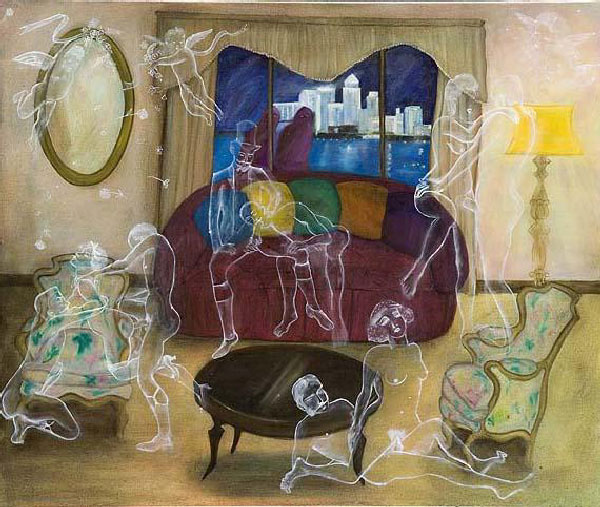
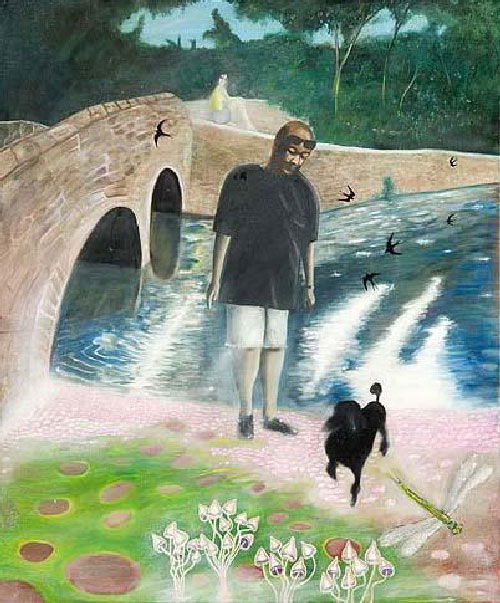
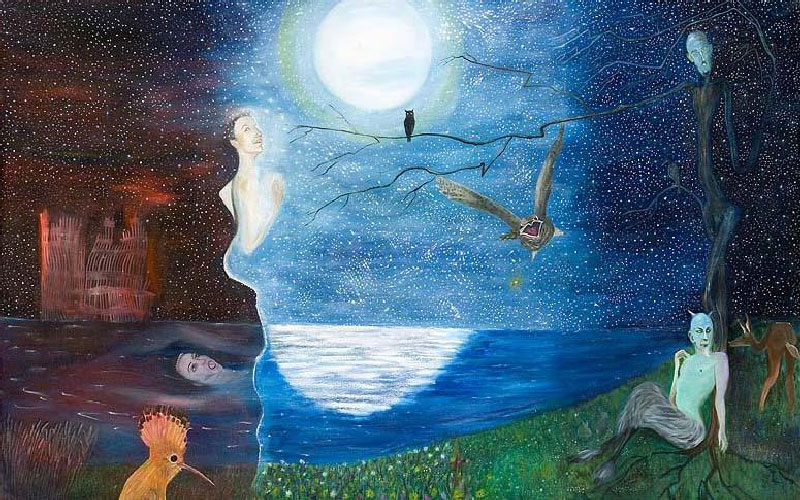
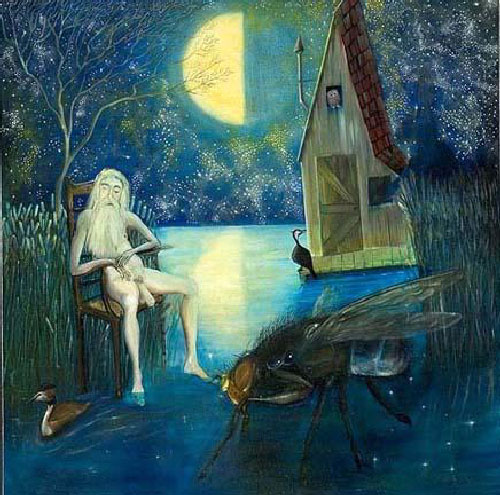
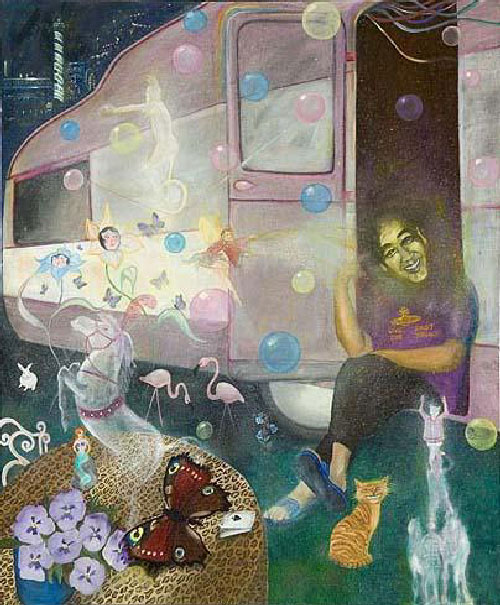
ARTIST:
David Harrison
In an otherwise unremarkable 1950s living room, a fantastical cast of ghostly characters is engaged in an orgy of sexual activity. At least one of them, sat on the burgundy sofa beneath a pair of winged, garlanded cherubs, appears to belong to an age long since past; the Erotic Dead, referred to in the painting's title. Two other figures, silent witnesses swathed in sheets, look in through the window. Behind them a contemporary urban landscape lights up the night sky. Harrison has created a fairy story for adults, an otherworldly scene of animal lust. Is this the heaven of a socially emancipated past, he dares to ask, while the authoritative hell of today looms outside?
Swallows dip and dive over a sun-streaked river as a perfectly groomed poodle trots along a pink-pebbled path after a dragonfly. We are looking through the eyes of the painting's subject, a young man lost in an hallucinogenic reverie fed by the magic mushrooms seen growing in the foreground and referenced in the work's title. While conventional perspective is retained, almost all indications of time and place are removed and replaced by psychedelic colour and candy cobblestones to create an 'Alice in Wonderland'feeling, in which man and nature, real and unreal, cohabit.
The natural world, and the struggle of all living creatures to thrive and secure their existence within it, is a central theme in Harrison's work. Birds, plants, animals and humans, both real and imaginary, spiritual, pagan and symbolic, take their places in his compositions, engaging the viewer and encouraging us to look beyond what we know to be existent. This is again the case in Spirits Drifting, in which night-dwellers awaken a cast of nocturnal creatures, led by a swooping, screeching bird of prey. Painted with a puzzling precision, not unlike Surrealist dreamscapes of the early 20th-century, even familiar devices and objects begin to appear strange and out of place.
In this painting, Harrison takes us to a parallel world in which familiar objects are made strange by their skewed perspective and the paranormal narrative which has brought them together. Under a Samuel Palmer moon, perfectly framed within a star-drenched sky, a naked old-man, clearly identifiable as the 'Dangly' in the work's title, sits quietly watching a river go by. Across from him stands a ginormous, Kafka-esque fly, dominating the foreground and lending a sense of foreboding to the otherwise tranquil composition. "In fairy stories," Harrison observes, the natural and supernatural go hand in hand." Beyond the lopsided strange house on the lake, we are encouraged to believe, is yet another world, a world of dreams and the dark side of the moon.
Like the conductor of a menagerie of magical creatures, Miss Kitty sits smiling on the step of her pink and white caravan in a haze of hallucinatory, drug-induced visions. Cats, rabbits, flamingoes and butterflies amuse themselves among flowers, coloured bubbles and a cast of feathery, vaporous circus performers on temporary leave from their big top. By playing with their size and scale, Harrison intensifies the colour and light of the supernatural creations that he depicts; and situating midway between the visionary and the real, he ensures that we are never quite able fully to suspend disbelief.




